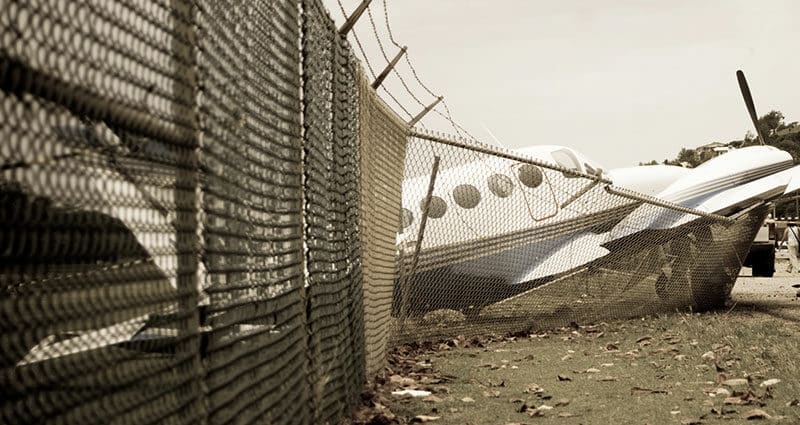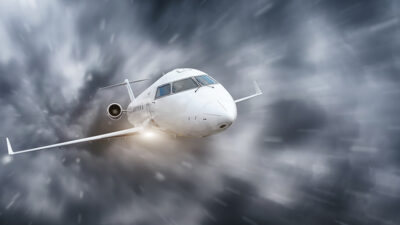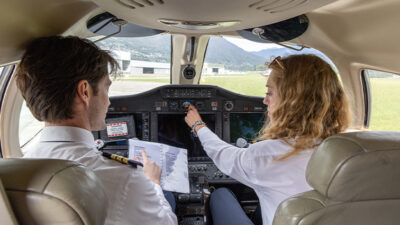Strategies for Reducing a Concerning Trend in Runway Excursions

Over a four-year period ending in 2010, there were 20 runway excursions at Jackson Hole, WY (KJAC). As a result of this uptick in excursions, the Federal Aviation Administration (FAA) published Safety Alert for Operators (SAFO) 11011. A combination of the heightened awareness created by the SAFO and the Jackson Hole airport and operators adopting many of the recommendations successfully has mitigated excursions over the last 12 years.
That absence of runway excursions at KJAC ended on December 27, 2022, when a Gulfstream 200 had a landing excursion on runway 19 and slid into a snowbank. There was a field condition NOTAM for 5/5/5 with compacted and wet snow on the runway. This incident also marked the 47th business aviation runway excursion in 2022—a 28% increase in the total number of excursions over 2021.
The 2022 trend continued to show light jets have the majority of excursions (63%) followed by turboprops (32%). A new trend in 2022 was that Aspen, CO, became the #1 airport for runway excursions. Unstabilized approaches, dynamic wind conditions and contaminated runways are the leading causal factors in excursions.
Losing Ground on Runway Excursions
Since 2020, the business aviation industry has been losing ground on reducing runway excursions. There are lessons that can be learned from the approach used at KJAC to reverse the trend, not only in a similar mountainous airport like Aspen but also nationwide. FAA SAFO 11011 contains best practices and mitigation strategies, many of which can be applied to any airport.
While some operators currently incorporate many of these items in their programs, others don’t, and excursions continue to occur.
A key factor for any airport, as noted in the SAFO, is to fly a “stabilized approach and touchdown with accuracy—on speed, on path, configured and landing at a point on the runway, within the touchdown zone to ensure the aircraft to be stopped on the runway.” FAA Advisory Circular (AC) 91-79A and Flight Safety Foundation (FSF) Go-Around Decision-Making and Execution Project documents have comprehensive guidance on stabilized approaches that can be used to benchmark your procedures.
A simple but effective tool has been a warning about a higher risk of runway excursions at KJAC in the Chart Supplement. That real-time awareness for flight crews can trigger a reminder to discuss this during crew briefings. You could add a similar alert in your Flight Risk Assessment Tool (FRAT) or flight trip sheet notes at other higher-risk airports that have multiple business aviation runway excursions in the last two years. As noted above, Aspen tops that list, with others on it including:
- Atlanta Dekalb-Peachtree (KPDK)
- Chicago Executive (KPWK)
- Denver Centennial (KAPA)
- Morristown, NJ (KMMU)
- Phoenix Mesa Gateway (KIWA)
- Teterboro, NJ (KTEB)
Higher risks at these airports can be related to ATC techniques, procedure design, airport constraints or topography.
Ultimately, it is up to the flight crew to plan and operate within the performance limitations with an effective safety margin. Having a heightened awareness when operating into these airports can be an effective cue to manage the risk.
Increasing the Focus on SAFO Best Practices
For the safety manager, a step that can be used to manage the risk within your flight operation is to evaluate your operations manual guidance, FRAT and training programs for addressing the key SAFO best practices that may apply at any airport and include the following:
- Remain aware of changing weather and wind conditions that could exceed aircraft landing limitations.
- When manually braking, use steady pressure, and do not pump the brakes.
- Provide braking action reports (PIREP).
- Use caution for asymmetric thrust when deploying thrust reversers in crosswinds and on slippery runways.
- Minimize fuel tankering at airports with limited margins for error, as this could extend the aircraft landing distance.
- Avoid landing with a tailwind, if possible.
- Obtain latest weather and runway conditions (braking action reports, friction values and contaminant type and depth). Always use the most current weather for calculating aircraft performance.
Another resource for assessing your mitigation strategies is the list of 35 recommendations for aircraft operators in the Global Action Plan for the Prevention of Runway Excursions (GAPPRE) document. That 2021 document from the Flight Safety Foundation and Eurocontrol provides a comprehensive analysis of the issue.
If an FAA SAFO can have such a positive effect on preventing runway excursions at a higher risk airport like KJAC for over a decade, there are lessons we can learn from that risk management technique to apply to the broader issue of recent increases in runway excursions: Provide flight crews with real-time cues when operating in higher-risk environments and back that up with guidance on best practices and mitigation strategies.
 Advanced Aircrew Academy
Advanced Aircrew AcademyAdvanced Aircrew Academy enables flight operations to fulfill their training needs in the most efficient and affordable way—in any location at any time. We do this by providing high quality professional pilot, flight/cabin attendant, flight coordinator, maintenance, and line service training modules delivered via the web using a world class online aviation training system.
https://www.aircrewacademy.com/
© 2024 Advanced Aircrew Academy. All Rights Reserved.
Next ArticleRelated Posts

Understanding the Challenge of Turbulence-Related Injuries in Business Aviation
The challenge of managing air turbulence in business and private aviation is becoming increasingly evident due to the growing number of turbulence-related incidents affecting aircraft operators across the industry.

Safety in Numbers: Trends in Aviation Accidents and Incidents
Every accident is preventable; the problem is that we don’t know how to prevent it until after the accident happens. However, what we can do as an industry is honor the anguish of each event by sharing the information, the mistakes and the outcomes to improve safety for everyone.

